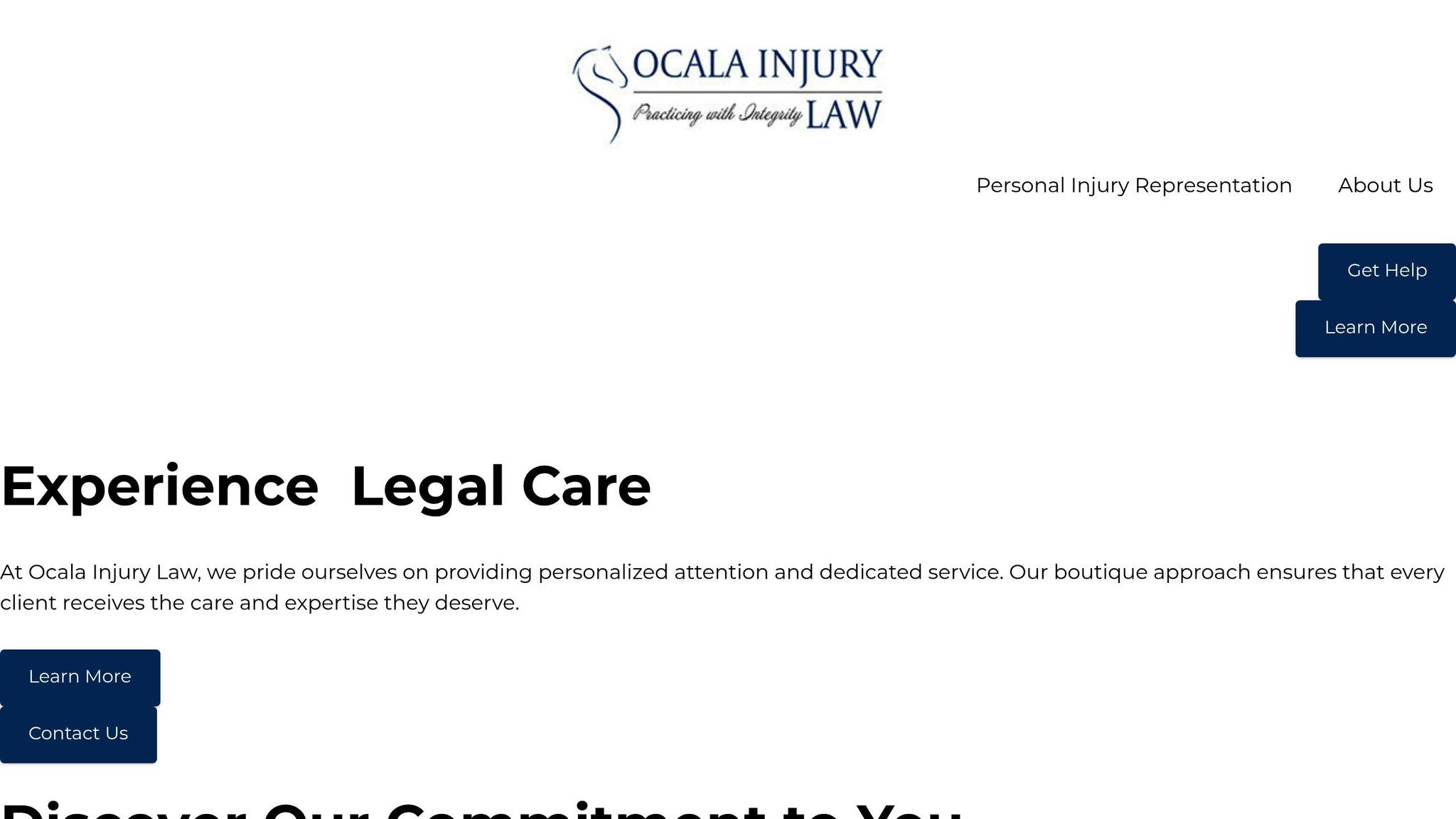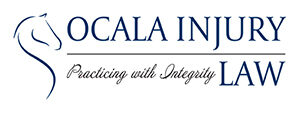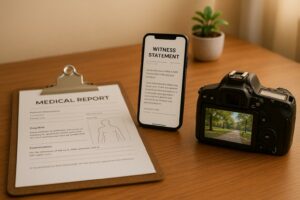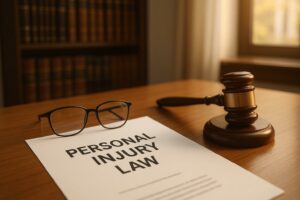Personal injury law helps people who are harmed due to someone else’s negligence. It focuses on securing financial compensation for injuries, emotional distress, and other damages while holding the responsible party accountable.
Key Points:
- Purpose: To provide compensation for physical, emotional, and financial harm caused by negligence or wrongful actions.
- Common Cases: Car accidents, workplace injuries, medical malpractice, slip-and-fall incidents, defective products, and dog bites.
- Core Elements of a Claim:
- Duty of Care: The defendant had a responsibility to avoid causing harm.
- Breach of Duty: The defendant failed to meet this responsibility.
- Causation: The breach directly caused the injury.
- Damages: The plaintiff experienced actual losses (medical bills, lost wages, emotional distress, etc.).
- Types of Compensation:
- Economic Damages: Tangible losses like medical expenses and lost wages.
- Non-Economic Damages: Intangible harm such as pain and suffering.
- Punitive Damages: Penalties for extreme negligence or misconduct.
- Civil vs. Criminal Cases: Personal injury cases focus on compensation, while criminal cases aim to punish offenders.
If you’ve been injured, understanding your rights and gathering strong evidence – like medical records, photos, and witness statements – are critical steps. Legal support can help you navigate the process and secure fair compensation.
Core Principles of Personal Injury Law
Personal injury law falls under the broader umbrella of civil law, offering a structured way to address harm caused by negligence or wrongful actions. At its core, it aims to achieve two main goals: ensuring injured individuals receive fair compensation and holding the responsible parties accountable for their actions.
Basic Concepts
The central idea behind personal injury law is that those who suffer harm due to someone else’s actions are entitled to financial compensation. This compensation is designed to help restore the injured party by covering expenses like medical bills, lost income, and other damages. It also accounts for both tangible losses (like hospital fees) and intangible harm (such as emotional distress or pain).
"At Ocala Injury Law, we believe that every client deserves personalized attention and dedicated advocacy." – Ocala Injury Law
For a personal injury claim to succeed, it must be proven that one party’s actions – or failure to act – directly caused the injury. This requires clear evidence, expert testimony, and detailed documentation of the damages suffered.
Now, let’s look at how personal injury cases stand apart from criminal cases.
Civil vs. Criminal Cases
Personal injury cases differ from criminal cases in several important ways:
| Aspect | Personal Injury (Civil) Cases | Criminal Cases |
|---|---|---|
| Primary Goal | Compensate the injured party | Punish the offender |
| Burden of Proof | Preponderance of evidence (more likely than not) | Beyond reasonable doubt |
| Case Initiator | Injured individual (plaintiff) | Government prosecutor |
| Outcome | Monetary compensation | Fines, imprisonment, or both |
| Legal Standard | Negligence or liability | Criminal conduct |
While criminal cases focus on punishing offenders and protecting society, personal injury law is about addressing the harm done to individuals by providing financial relief. This distinction highlights the different purposes and outcomes of each type of legal case.
Building a Personal Injury Case
Laying the groundwork for a personal injury case hinges on having solid evidence and thorough documentation. These elements are crucial for demonstrating the validity of a claim.
4 Required Elements of Liability
To successfully establish liability in a personal injury case, you need to prove four key components:
- Duty of Care: The defendant had a legal responsibility to act in a way that avoided causing harm to others. For instance, drivers are expected to follow traffic laws.
- Breach of Duty: The defendant failed to meet this obligation. Examples include running a red light or neglecting to fix a dangerous condition on their property.
- Causation: There must be a direct link between the breach of duty and the injury sustained. In other words, the defendant’s actions must have caused the harm.
- Damages: The plaintiff must demonstrate actual losses, such as medical expenses, lost income, property damage, or emotional distress.
Types of Legal Responsibility
Personal injury cases can involve various forms of legal responsibility, each with its own nuances:
| Type of Liability | Description | Common Examples |
|---|---|---|
| Negligence | Failing to exercise reasonable care | Car accidents, slip-and-fall incidents, medical errors |
| Intentional Acts | Deliberate actions that result in harm | Assault, battery, false imprisonment |
| Strict Liability | Responsibility without needing to prove fault | Defective products, injuries from dangerous animals |
The type of liability determines what kind of evidence is necessary to build a case.
Gathering Essential Evidence
Timely collection and preservation of evidence are critical. Key documents and records to support your case may include:
- Photographs of injuries and the accident scene
- Medical records and treatment details
- Witness statements and their contact information
- Police or incident reports
- Proof of financial losses, such as lost wages or repair costs
Each piece of evidence ties into the broader effort to substantiate your claim and demonstrate the impact of the incident.
Main Types of Cases
Personal injury cases stem from situations where negligence leads to harm, and understanding the different types can help determine when legal action might be necessary. These cases are built on core liability principles but take on various forms depending on the circumstances.
Examples of Cases
| Case Type | Description | Key Elements |
|---|---|---|
| Auto Accidents | Collisions involving cars, trucks, motorcycles | Negligent driving, traffic violations, and damage documentation |
| Premises Liability | Injuries due to unsafe property conditions | Evidence of hazards, property owner’s awareness, and lack of adequate warnings |
| Medical Malpractice | Healthcare negligence | Expert testimony, deviation from care standards, and proof of harm |
| Workplace Injuries | Accidents during employment | OSHA violations, unsafe conditions, and employer negligence |
| Product Liability | Harm from defective products | Design flaws, manufacturing defects, or insufficient warnings |
| Dog Bites | Injuries from animal attacks | Owner responsibility, local law violations, and injury documentation |
Each type of case requires specific evidence and strategies. For instance, auto accident cases often hinge on police reports, eyewitness accounts, and accident reconstructions to establish fault. Medical malpractice claims demand expert testimony and detailed medical records to prove a breach in the standard of care.
In workplace injury cases, especially in industries like construction, both workers’ compensation and potential third-party liability must be explored. Investigating safety protocols and OSHA compliance is crucial. Product liability cases focus on whether a product’s design, manufacturing, or labeling directly caused harm, often requiring technical analysis by experts.
For premises liability cases, the injured party must show that the property owner was aware of a dangerous condition but failed to address it. Meanwhile, dog bite cases involve proving the owner’s responsibility and may include evidence of local ordinance violations.
These categories illustrate how personal injury law translates liability into actionable claims, tailoring approaches to fit the specifics of each situation.
sbb-itb-68ed374
Understanding Compensation
Compensation, rooted in the principles of liability, aims to address both the financial and personal losses experienced by an injured party. Its purpose is to provide relief for monetary setbacks while also acknowledging the broader personal toll through distinct categories of damages.
Types of Money Damages
| Damage Type | Description | Common Examples |
|---|---|---|
| Economic Damages | Tangible financial losses | Medical bills, lost wages, property damage, rehabilitation costs |
| Non-Economic Damages | Intangible personal losses | Pain and suffering, emotional distress, loss of enjoyment |
| Punitive Damages | Penalties for extreme negligence | Awarded in cases of gross misconduct |
Economic damages focus on measurable financial losses tied to the injury. These can include:
- Medical bills
- Lost wages or reduced earning capacity
- Property repair or replacement
- Rehabilitation expenses
- Costs for home modifications
- Transportation for medical care
Non-economic damages, on the other hand, compensate for the personal and emotional toll of the injury. Examples include:
- Physical pain and suffering
- Emotional distress
- Loss of companionship or consortium
- Permanent disfigurement
- Reduced quality of life
- Loss of life’s enjoyment
Punitive damages are less about compensation and more about holding the at-fault party accountable for extreme behavior, such as:
- Intentional misconduct
- Gross negligence
- Willful disregard for safety
- Repeated dangerous actions
"At Ocala Injury Law, we pride ourselves on providing personalized attention and dedicated service. Our boutique approach ensures that every client receives the care and expertise they deserve."
Properly assessing these damages is crucial for determining fair compensation. Accurate documentation, such as medical records and employment verification, strengthens economic damage claims. Similarly, testimony from mental health experts or family members can support non-economic damage claims by illustrating the personal impact of the injury.
Several factors influence the final compensation amount, including:
- The severity and permanence of the injury
- How the injury affects daily life
- The quality and scope of evidence presented
- Limits imposed by local laws or damage caps
- Insurance policy restrictions
- The degree of shared fault, if any
Legal Support from Ocala Injury Law

When it comes to personal injury claims, having reliable legal support can make all the difference. Navigating the complexities of liability and evidence collection is no small task, and that’s where Ocala Injury Law steps in. Established in 2023, this firm takes a boutique approach to representation, offering personalized attention to every case.
Services and Support
Ocala Injury Law provides comprehensive support throughout the entire claims process. Here’s a breakdown of their key services and how they benefit clients:
| Service Area | Description | Client Benefit |
|---|---|---|
| Case Evaluation | Free initial consultation to review your case and discuss options | Explore your legal options without any upfront financial risk |
| Legal Strategy | Tailored legal plans designed to suit your specific needs | Receive representation that’s focused on your unique situation |
| Negotiations | Expert handling of insurance and settlement discussions | Aim for the best possible compensation through skilled talks |
| Trial Preparation | Thorough preparation for court if a settlement isn’t reached | Be ready to present a strong, well-prepared case in court |
This structured approach ensures clients receive dedicated, step-by-step support, reinforcing the firm’s commitment to advocacy.
Founded by Alida "Ali" Catherine Darias, Esq., Ocala Injury Law operates with a focus on integrity, empathy, and client-first representation. Recognizing that every personal injury case is distinct, the firm develops customized legal strategies to help clients pursue the compensation they deserve. With a promise of clear and direct communication, you’ll work closely with your attorney every step of the way.
Summary
Personal injury law exists to safeguard individuals who suffer harm due to negligence or intentional actions. This area of law covers a broad spectrum of cases, including auto accidents, medical malpractice, and more. At its core, personal injury law revolves around proving liability, which is built on four critical elements of a claim.
Grasping these legal intricacies is essential for obtaining fair compensation. Success often hinges on gathering strong evidence, skillful negotiation, and having knowledgeable legal support to navigate the process effectively.
Established in 2023, Ocala Injury Law provides dedicated legal services tailored to personal injury cases. They offer free initial consultations and craft strategies that align with each client’s unique situation. With a strong emphasis on personalized attention, they guide clients through every stage of the legal journey – from evaluating the case to negotiating settlements or preparing for trial. Their approach ensures clients are supported every step of the way, focusing on building a solid case and achieving fair outcomes.
Securing fair compensation depends not only on the law but also on the specific details of your case. This summary lays the groundwork for understanding your rights and the options available when pursuing a claim.
FAQs
How can I tell if I have a valid personal injury case?
Determining whether you have a valid personal injury case often hinges on a few critical factors. Typically, you might have grounds for a claim if your injury resulted from someone else’s negligence or wrongful behavior. To establish this, you’ll need to show that the other party had a duty of care toward you, failed to uphold that duty, and that their actions (or lack thereof) directly caused your injury.
The specifics of your case matter a lot – things like the nature of the accident, the severity of your injuries, and the evidence you can provide to back up your claim. Speaking with a personal injury attorney can clarify your rights and help assess the strength of your case. Many law firms, such as Ocala Injury Law, offer free consultations to review your situation and explain your options moving forward.
What evidence is crucial to collect for a personal injury case?
Gathering solid evidence is a cornerstone of building a compelling personal injury case. Here are some key types of evidence to focus on:
- Photos and videos: Capture the accident scene, any visible injuries, and property damage to provide a visual record.
- Medical records and bills: These document the extent of your injuries and the costs of treatment, helping to quantify your damages.
- Police or incident reports: An official report can offer a neutral account of what happened and may include critical details.
- Witness statements: Testimonies from people who saw the accident can strengthen your case by providing additional perspectives.
- Proof of lost income: Documentation of missed work or other financial setbacks caused by your injury is essential for claiming compensation.
Organizing this evidence thoroughly can significantly improve your chances of a successful outcome. A personal injury attorney, such as those at Ocala Injury Law, can guide you through the process of collecting and presenting this information effectively.
How does the personal injury compensation process work, and what factors determine the amount you can receive?
The process of securing compensation for a personal injury generally revolves around demonstrating that someone else’s negligence directly caused your injury. Once responsibility is established, the next step involves negotiating or awarding compensation to address damages like medical expenses, lost income, and emotional or physical pain.
How much you might receive depends on various factors, such as the seriousness of your injuries, how they affect your daily life, the costs of medical care, and whether the responsible party’s actions were particularly reckless. Since every case is different, partnering with a skilled attorney can be crucial in helping you pursue a fair outcome tailored to your situation.




